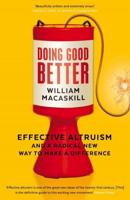Publisher's Synopsis
Excerpt from Discussions, Vol. 3
In describing what - is believed to be the prevalent, though not universal, theory and usage of the bar, we would by no means compose our description out of those base arts which are de Spised and repudiated as much by honorable lawyers as by all other honest men. There is no need to debate the morality or immorality of the various tricks; the subornation of witnesses; the bribing of jurymen the falsification of evidence in its recital; the misquotation or garbling of authorities; the bullying of truth ful and modest persons placed in the witness' stand by no choice of their own; the shaving of the claims of clients in advance of a verdict by their own counsel, by which some lawyers disgrace their fraternity. This class are beyond the reach of moral con Siderations; and, concerning their vile iniquity, all honest men are ah'eady agreed. Nor, on the other hand, can we take the principles of that honorable but small minority as a fair exam pler of the theory of the profession, who defend in the bar no act or doctrine which their consciences would not justify in the sight of God, and who say and do nothing Officially which they would not maintain as private gentlemen. This class, we fear, are regarded by their own fraternity rather as the puritans of the profession. It is believed that the theory of the great mass of reputable lawyers is about this: that the advocate, in rep resenting his client's interest, acts officially, and not personally, and, therefore, has no business to entertain, even as an advocate.
About the Publisher
Forgotten Books publishes hundreds of thousands of rare and classic books. Find more at www.forgottenbooks.com
This book is a reproduction of an important historical work. Forgotten Books uses state-of-the-art technology to digitally reconstruct the work, preserving the original format whilst repairing imperfections present in the aged copy. In rare cases, an imperfection in the original, such as a blemish or missing page, may be replicated in our edition. We do, however, repair the vast majority of imperfections successfully; any imperfections that remain are intentionally left to preserve the state of such historical works.









